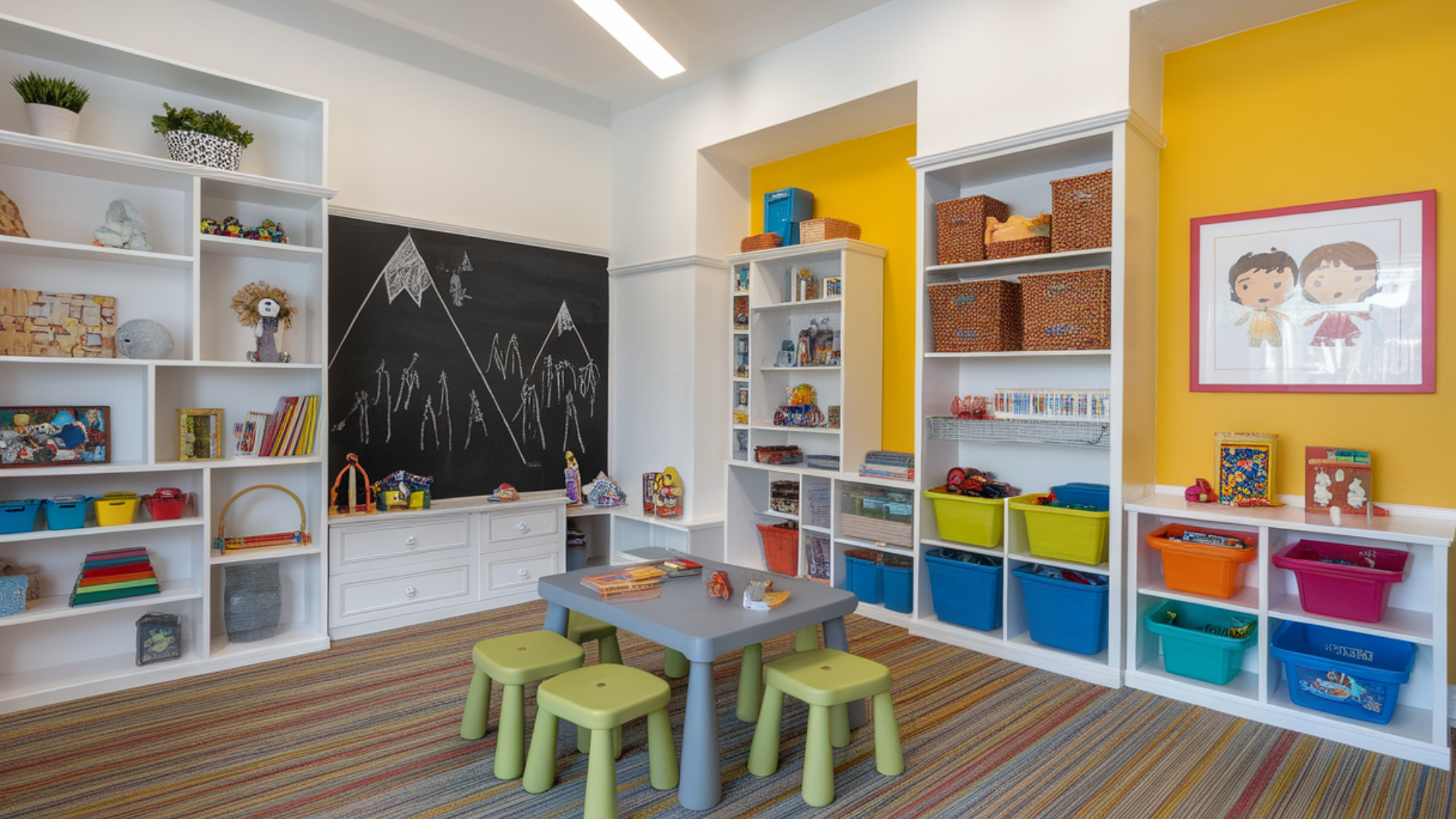I love finding smart ways to use extra space in the house. One of my favorite spots to makeover is the basement. It’s often quiet, roomy, and full of potential.
Turning it into a playroom is a fun way to give kids their own special area. They can play, create, and let their imaginations grow, all in one place.
You don’t need a big budget or fancy tools to do it. Just a little planning and a few clever ideas can make a big difference.
In this blog, I’ll share fun basement playroom ideas that are easy to try at home.
From simple decor tips to creative layouts, there’s something here for every kind of space. Let’s turn that unused basement into a place your kids will love.
Why Turn the Basement into a Playroom?
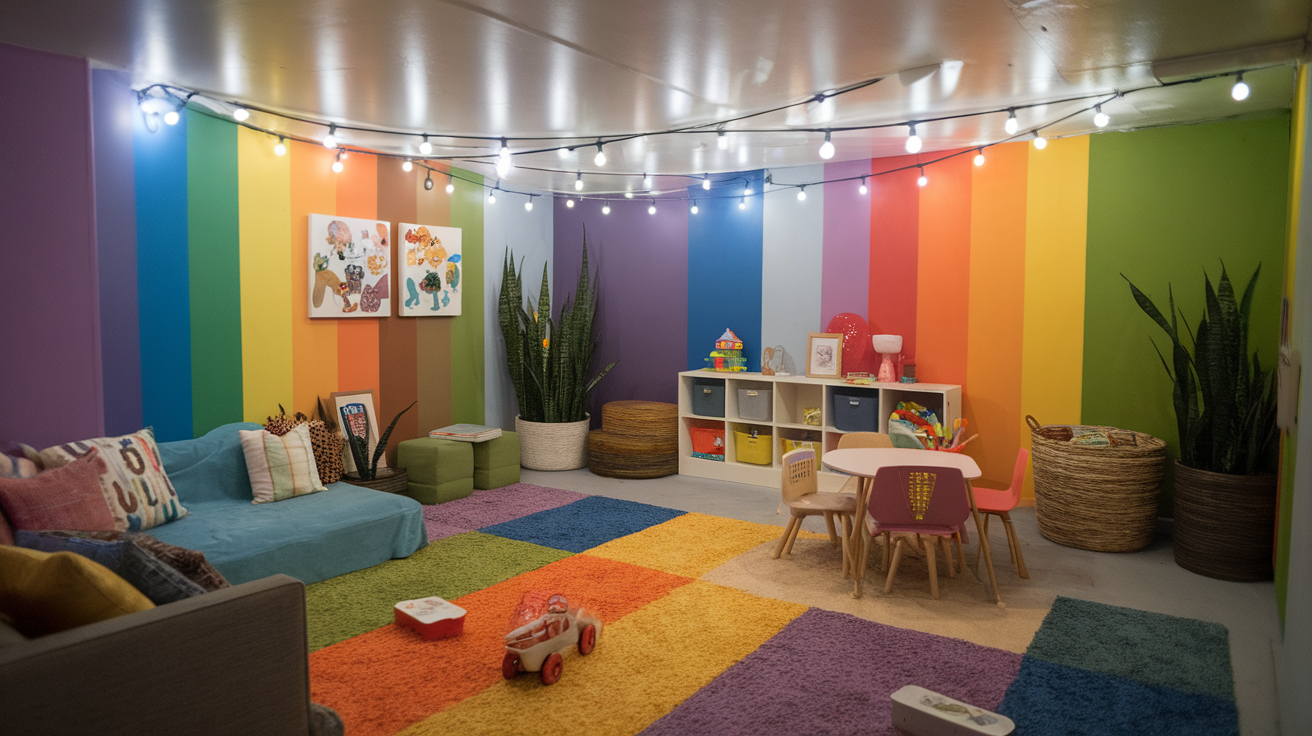
Basements often go unused or turn into storage spaces. But with a little planning, they can become one of the best spots in the house for kids.
A basement is quiet, roomy, and away from busy areas like the kitchen or living room. That makes it a great place for play.
Kids get their own area to spread out, be loud, and have fun, without getting in the way of daily life upstairs.
It also helps keep toys and clutter in one designated area, rather than scattered throughout the house.
The best part? A basement playroom is suitable for every season. It stays cool in summer and warm in winter.
You don’t need a fancy setup. Just a few smart ideas can turn a plain space into something bright, safe, and full of fun.
Fun Basement Playroom Ideas
If you’re ready to turn your basement into a playful space for your kids, these ideas will help you get started.
1. Brighten Up the Space with Colors
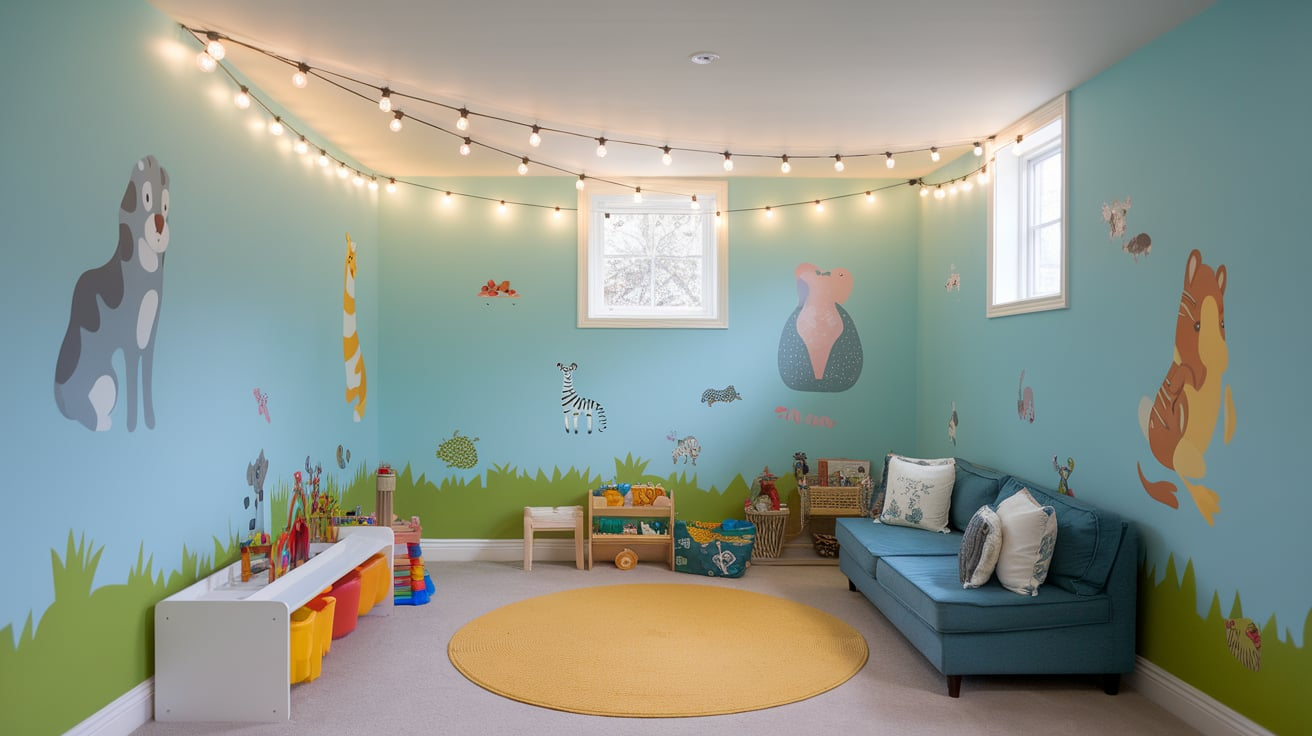
Basements are often dark and dull. A great way to change that is by adding color. Use bright paint on the walls, like yellow, light blue, or soft green.
These colors make the room feel bigger and happier. You can also add colorful rugs, pillows, and furniture.
Choose fun wall decals with stars, animals, or shapes. These are easy to stick on and remove later.
Lighting also helps. Try adding string lights or floor lamps to make the space feel warm and cozy. If the basement has small windows, use light curtains to let in as much sunlight as possible.
2. Create Separate Play Zones
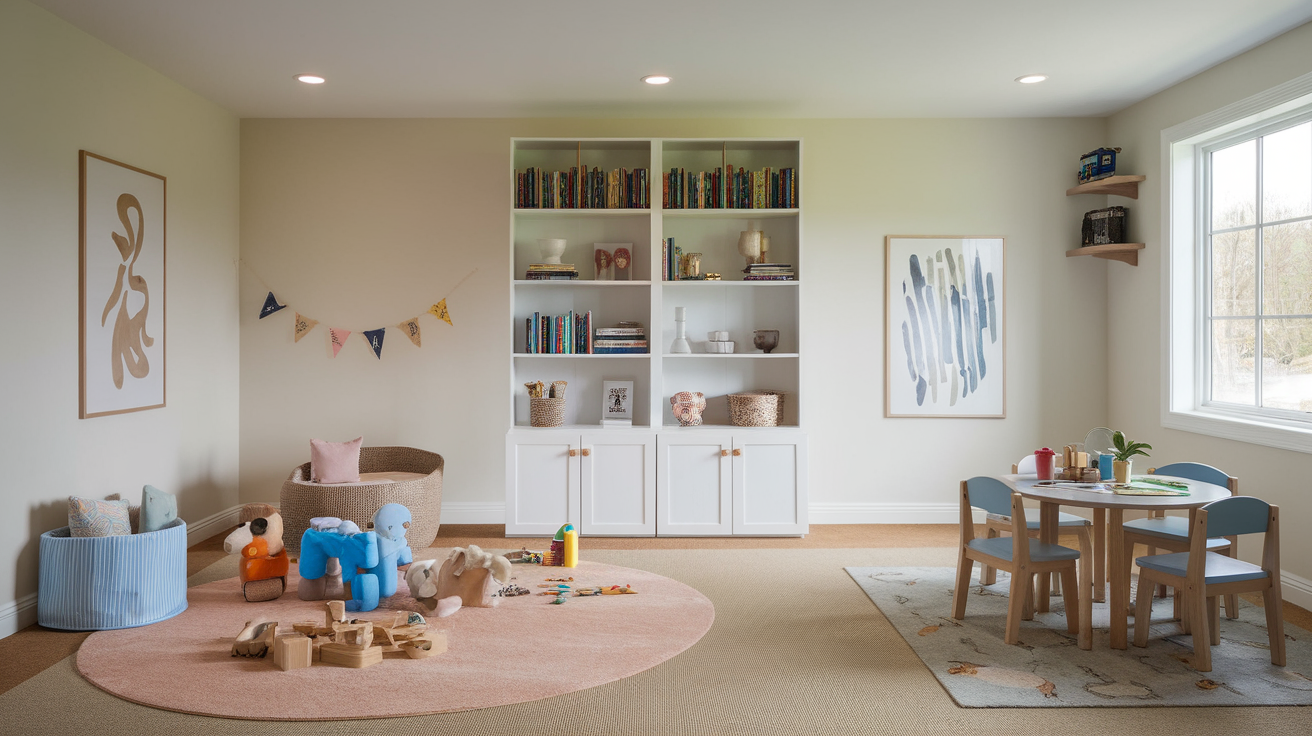
Kids love to do many things, play with toys, read books, build blocks, and do crafts. You can make the room more fun by creating different zones.
Use a soft rug for the toy zone. Add a small table and chairs for drawing or puzzles. Put a bookshelf in one corner for quiet reading time.
To keep it neat, use simple signs or labels. A sign that says “Blocks” or “Books” helps kids know where things go. Even a few bins or boxes can turn a corner into a special play spot.
3. Add Storage That Kids Can Use
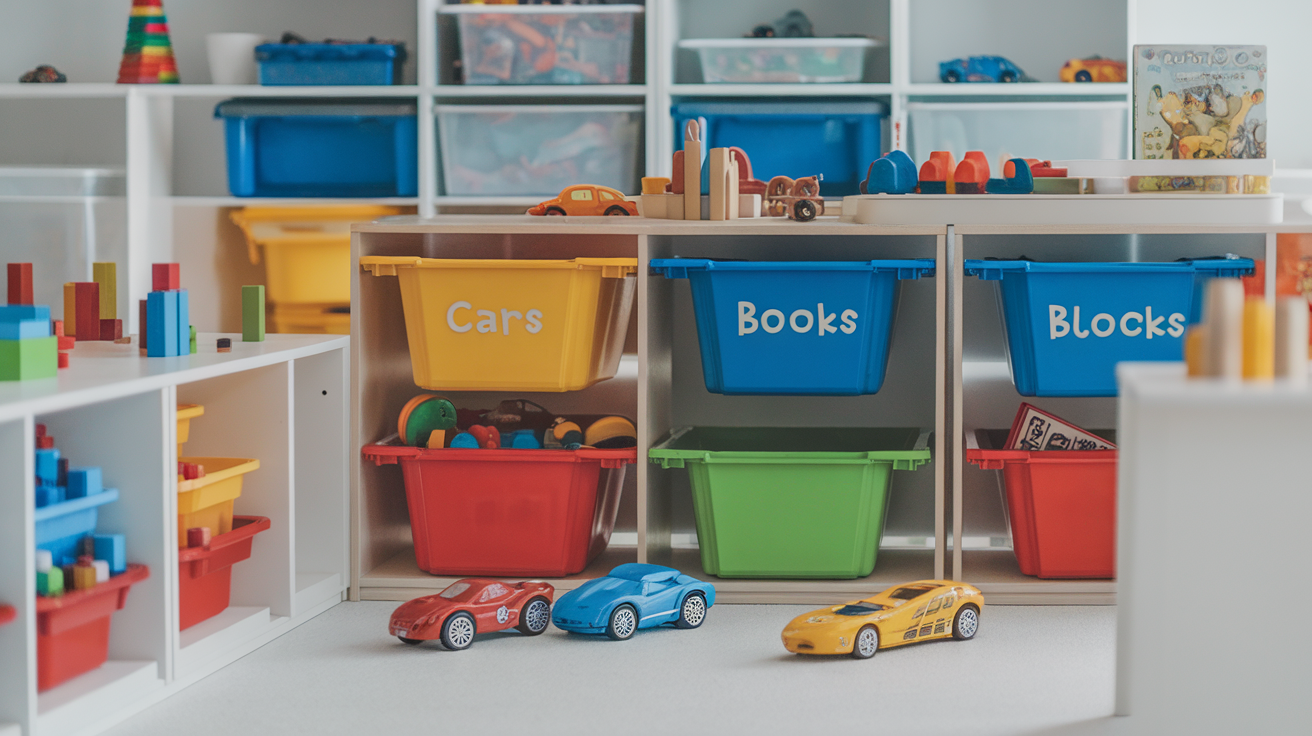
Keeping a playroom tidy can be hard. That’s why smart storage is so important.
Look for bins, baskets, and shelves that are low enough for kids to reach. Clear boxes are great because kids can see what’s inside.
You can even color-code bins, blue for cars, pink for dolls, and green for building toys.
Storage benches are helpful, too. They provide a place to sit and store toys simultaneously.
Label everything with words or pictures so even little ones can help with the cleanup. Good storage keeps the room fun and stress-free.
4. Use Soft Flooring for Safety and Comfort
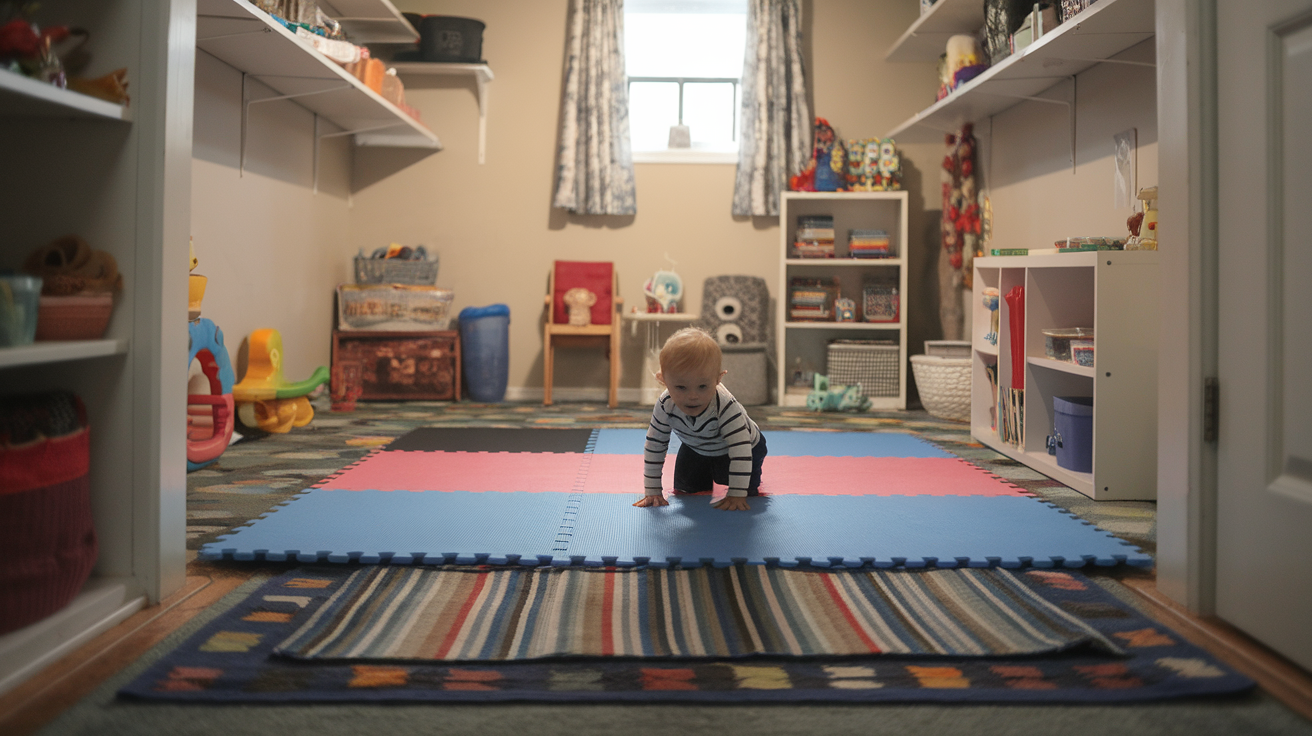
Basement floors are usually hard and cold. To fix that, add soft and warm flooring. Foam mats are a good choice.
They come in fun colors and shapes and are easy to clean. You can also use carpet tiles. These stick to the floor and give you a soft surface for play. If one gets dirty, you can just replace that tile.
Area rugs are another option. Choose ones with bold colors or patterns to make the room look cheerful.
A soft floor makes playtime more fun and safe, especially for toddlers who fall more often.
5. Make a Cozy Reading Nook
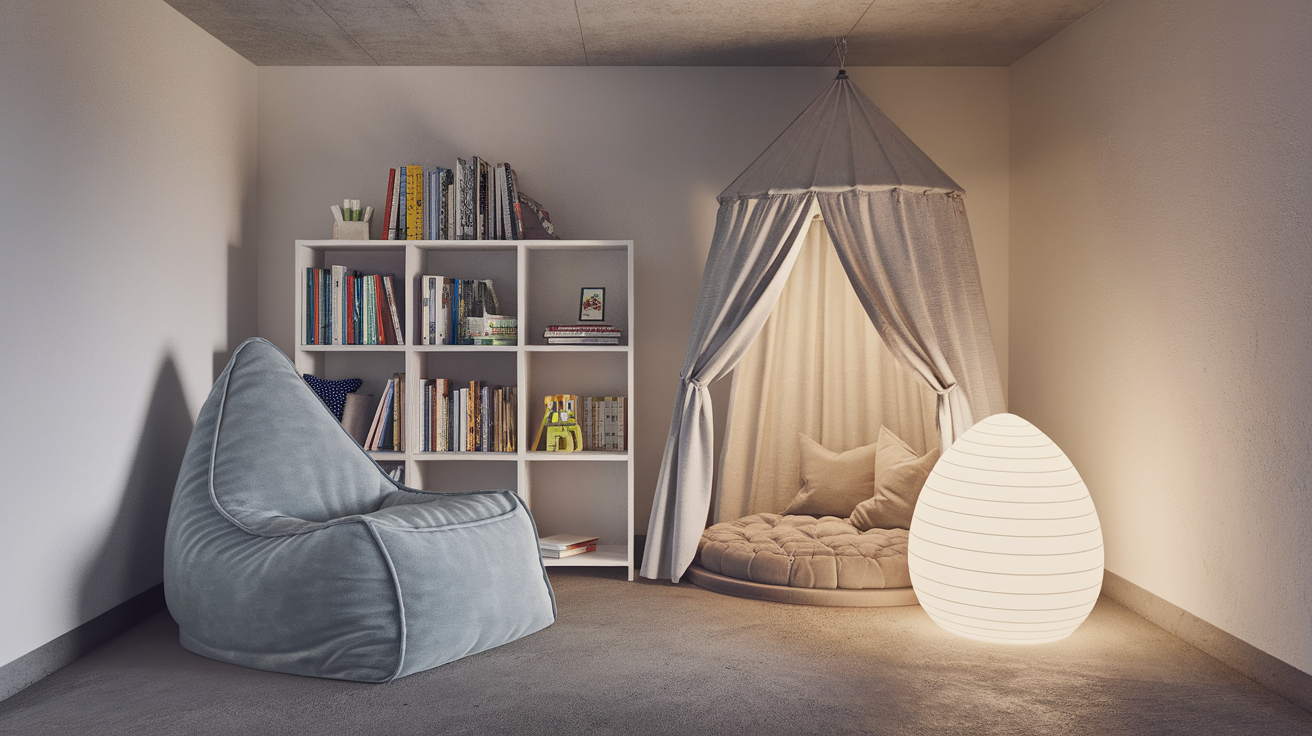
A reading corner helps kids relax and enjoy quiet time. You don’t need much to make one.
Add a small bookshelf, a bean bag or soft chair, and a floor lamp. Hang a curtain or use a tent to make it feel like a secret hideout.
Fill the shelf with books your child loves. You can also add a few stuffed animals or a blanket for extra comfort.
This space can be a calm break from noisy play and a nice way to build a love for reading.
6. Build a Mini Art Station
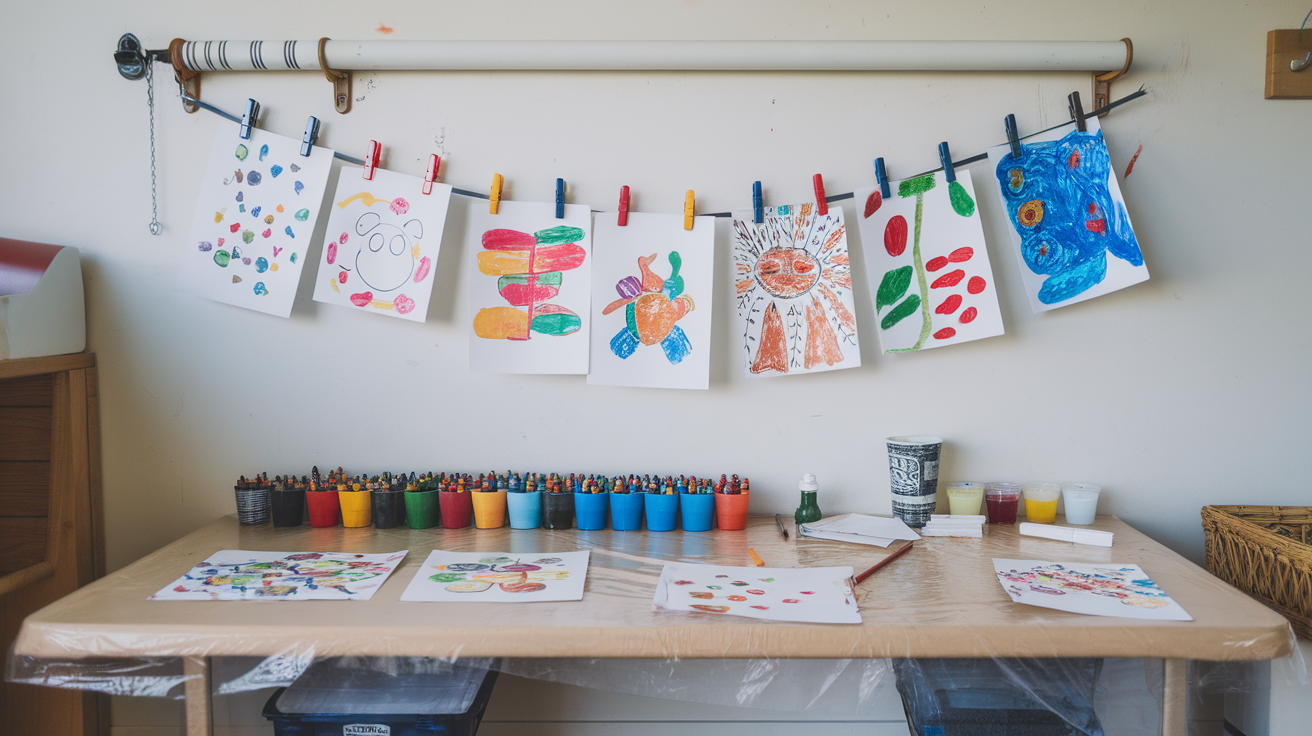
Kids love to draw, paint, and create. Give them a space just for that. Use a small table and chairs that are easy to clean.
Cover the table with a plastic cloth to protect it. Keep art supplies in clear bins or caddies. Add a roll of drawing paper on the wall so kids can pull down a new sheet whenever they want.
Hang their art with string and clips to make a little gallery.
This area helps them explore, learn, and have fun without making a mess in the rest of the house.
7. Include a Climbing or Activity Wall
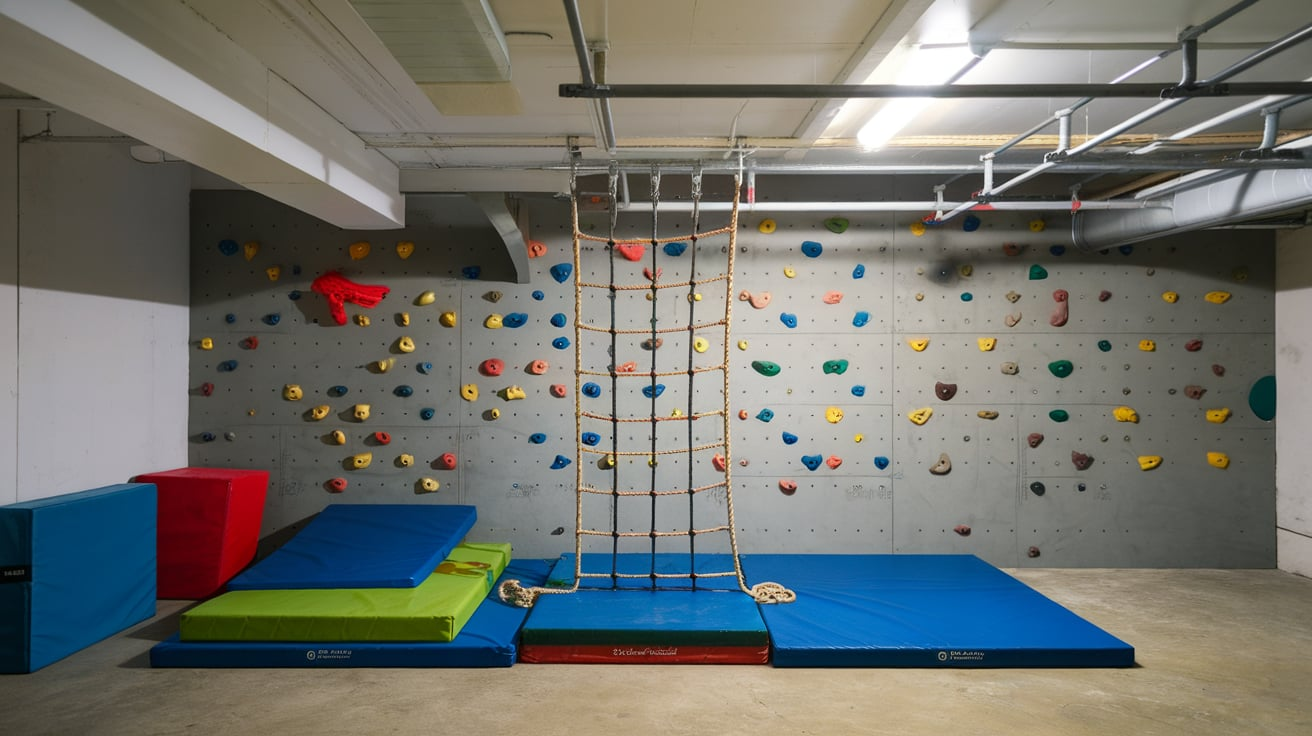
If your basement has the space and strong walls, think about adding a small climbing wall or pegboard.
You can also add monkey bars, a rope ladder, or hanging rings. These are great for building strength and burning energy.
Make sure it’s safe; use padded mats under the climbing area. You don’t need a big setup.
Even a few hand grips on a wall can turn into a fun indoor playground. Always watch younger kids while they climb or jump.
8. Create a Dress-Up and Pretend Play Area
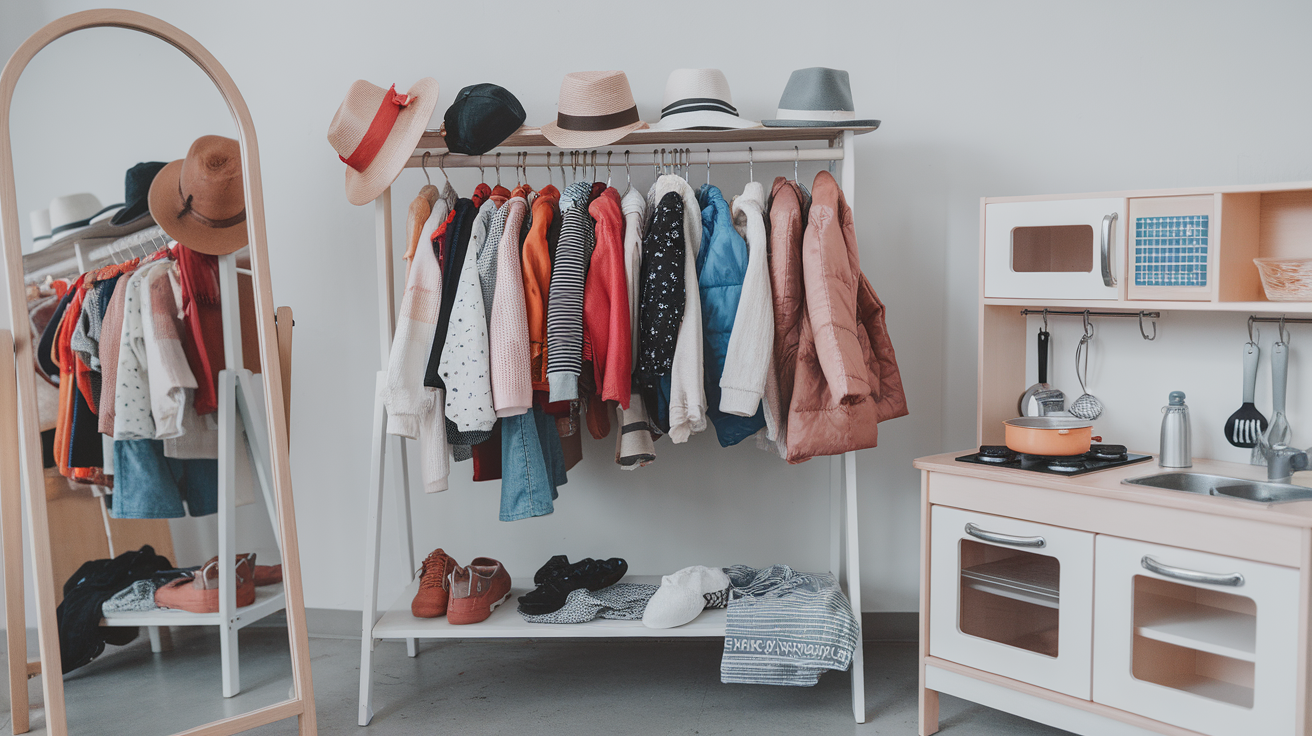
Pretend play plays a significant role in childhood development. Set up a dress-up corner with costumes, hats, and fun clothes.
You can hang them on a low rack or hooks. Add a small mirror and a toy chest for extra fun. You can also include play sets like a toy kitchen, doctor’s kit, or playhouse.
These help kids use their imagination and play out stories. Keep the area soft and open so kids can move around easily.
9. Turn One Wall into a Chalkboard or Whiteboard

Chalkboard and whiteboard walls are fun and useful. Kids can draw, write, and erase as much as they want. You can paint one wall with chalkboard paint or mount a large whiteboard.
This is great for drawing games, learning letters and numbers, or just doodling. Add a tray or shelf nearby to hold chalk or markers. It’s a simple idea that gives kids a lot of creative freedom.
10. Set Up a Screen-Free Game Zone
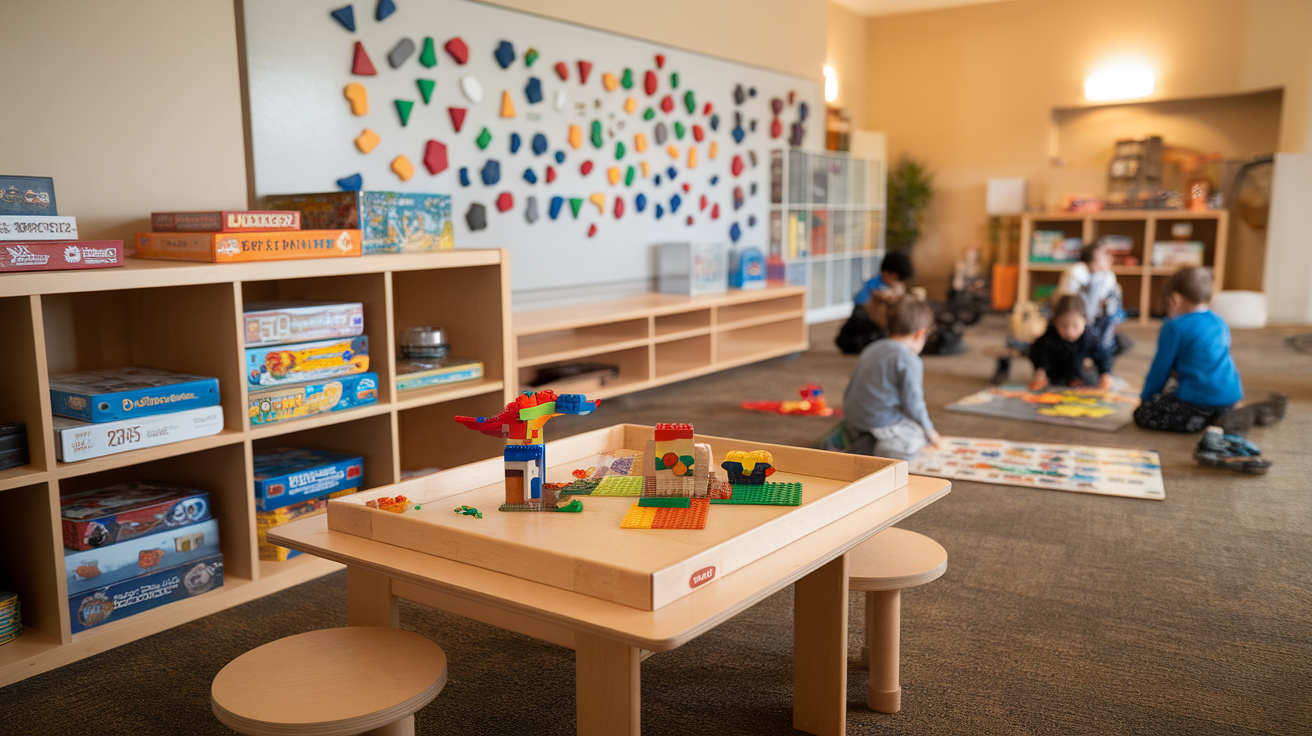
Kids don’t always need screens to have fun. Make a space for board games, puzzles, and building toys.
Use a sturdy table and comfy chairs. Keep games and puzzles in labeled boxes or drawers.
You can also add a LEGO table or a magnetic wall for playing with shapes.
These toys help kids think and create without using a phone or tablet. A screen-free zone gives their eyes a break and helps them play together.
11. Use Multi-Use Furniture
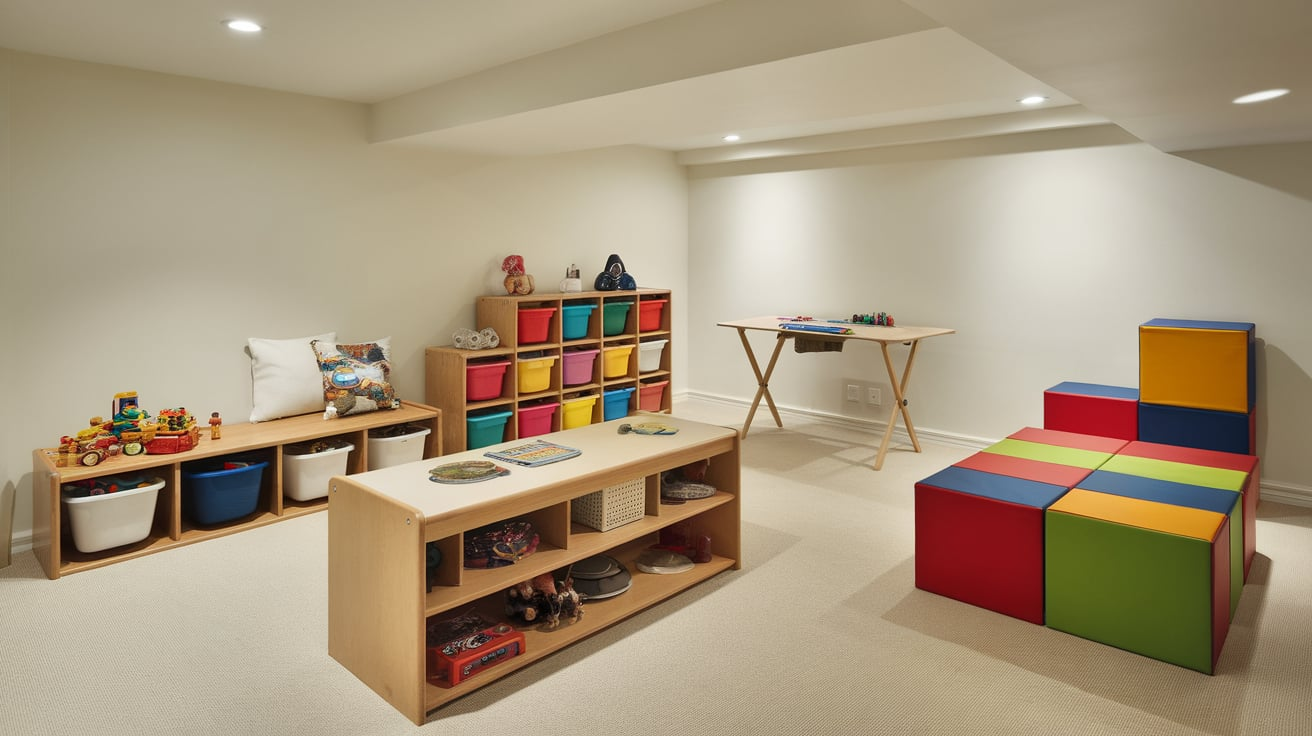
Basement playrooms often need to be flexible. Choose furniture that does more than one job.
A bench that opens up for storage, a table that folds away, or a sofa bed for sleepovers are all smart choices.
Modular pieces, like cube shelves or stackable chairs, let you change the layout anytime.
These work well as your kids grow or as their play needs change. Keep the room easy to move around in and simple to update.
12. Add Wall Decor That Grows with Your Kids
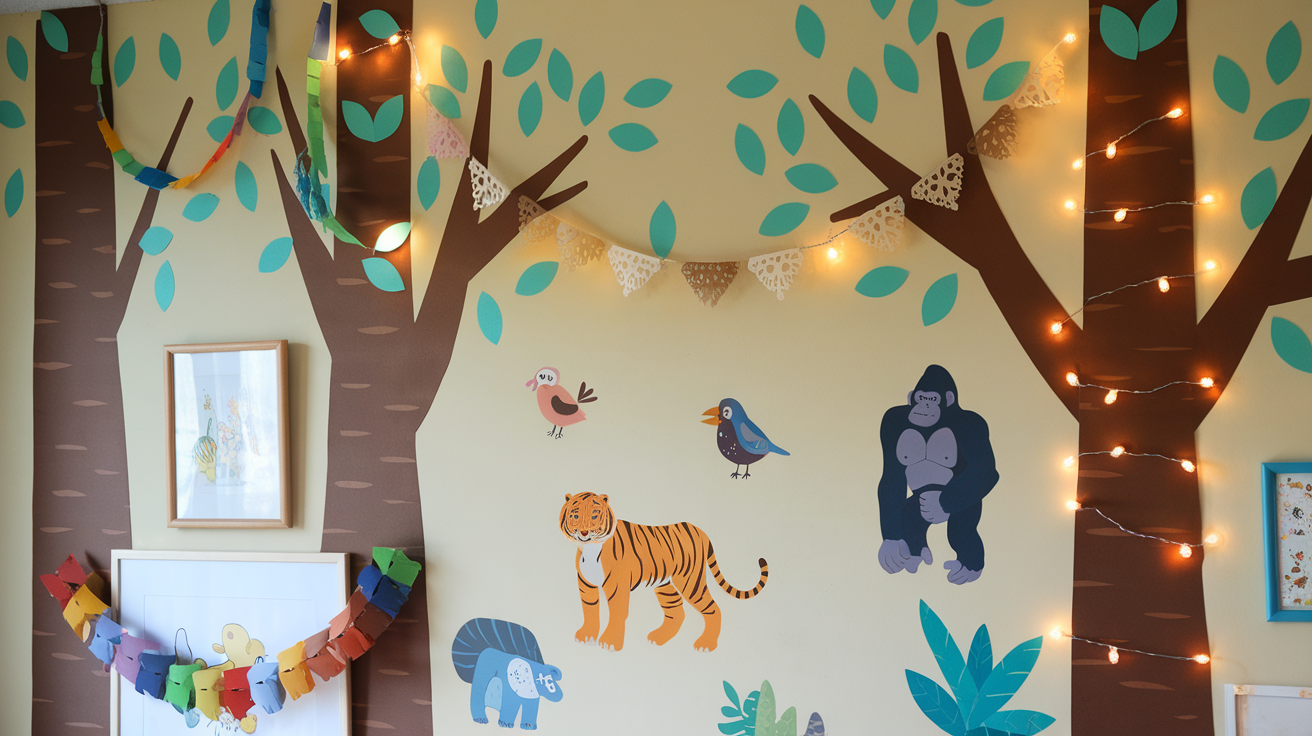
Use the walls to add fun and style. You can hang posters, art prints, or peel-and-stick murals.
Choose themes your kids like, animals, outer space, jungle scenes, or even their favorite characters.
Try to pick decor that is easy to change. That way, you can update it as your child’s interests grow.
String lights, paper garlands, or framed art made by your kids make the room feel personal. Walls don’t have to stay plain. Use them to tell a story.
13. Keep the Space Flexible for All Ages

As kids grow, their playroom needs change. Make the room flexible so it stays useful over time.
For toddlers, soft mats and toy bins are the best options. For school-age children, consider adding a homework desk, art station, or reading chair.
Leave open space for playing on the floor or for future furniture. Keep big toys to one side and store them when not in use.
A flexible room means you won’t have to redo everything in a year or two. You can simply shift things around as needed.
Basement Playroom Layout Ideas
The way you set up your basement playroom can make a big difference. A well-designed layout helps kids move around easily, locate their toys, and engage in various types of play.
1. Zoned Layout
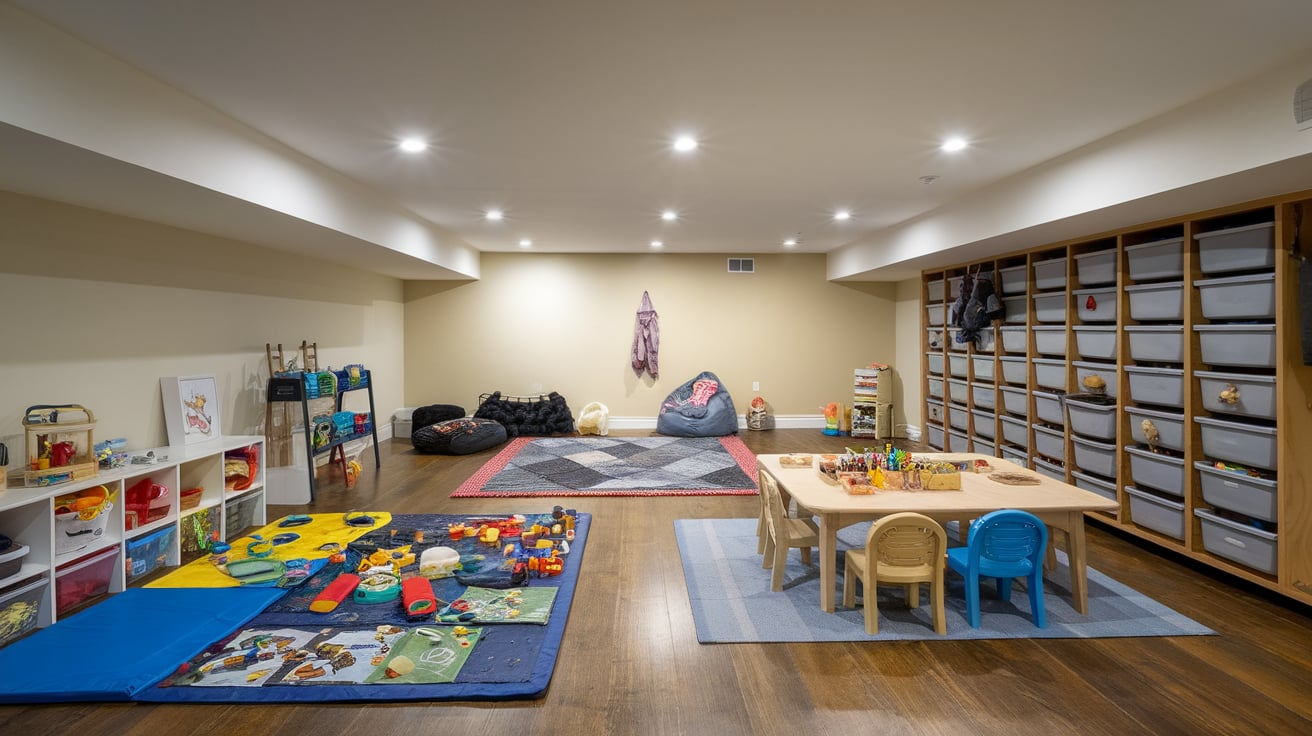
This layout divides the basement into clear zones, each with a purpose. It helps keep things tidy and lets kids know where to go for each activity.
Example Zones:
- Play Zone: Open floor space with soft mats for building blocks or pretend play.
- Reading Nook: Quiet corner with bookshelves, a bean bag, and a floor lamp.
- Art Zone: Small table with art supplies and wipeable flooring.
- Toy Storage Wall: One wall with bins and labeled shelves.
This layout works well in both small and large basements. Use rugs, shelves, or curtains to separate zones.
2. Central Play Area Layout
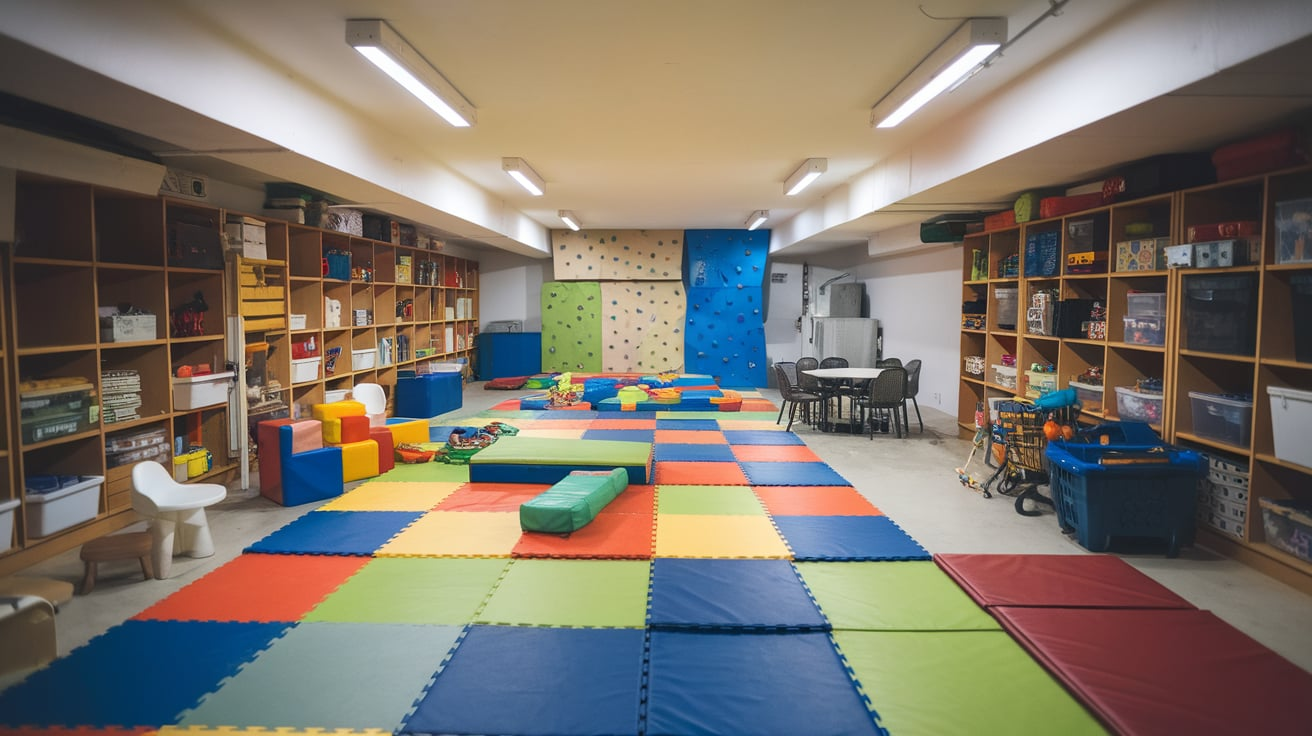
This layout keeps the middle of the room open, which is perfect for active play, large toys, or group games.
Key Features:
- Center Area: Foam mats or carpet for floor play, train tracks, or building sets.
- Walls Used for Storage: Shelves, toy bins, and hooks on the outer edges.
- Corners for Extras: Add a mini climbing wall or reading nook in one corner.
This layout works well if your kids enjoy running, rolling, or moving around.
3. Wall-Focused Layout

Use the walls to hold everything, leaving most of the floor space open.
Setup Tips:
- Mount whiteboards or chalkboards on one side.
- Use low shelves or cubbies along the wall for toys and books.
- Hang hooks or racks for dress-up clothes.
- One wall can even become a LEGO wall or an art display area.
This layout is great for smaller basements or narrow spaces.
4. L-Shape Layout

This layout places most of the activity zones along two connecting walls in an “L” shape. It keeps the space open but organized.
Typical Setup:
- Long Wall: Toy bins, table, and chairs for art or games.
- Short Wall: Cozy reading chair, book rack, or soft play mat.
- Free Area: Open space in the middle for moving around.
It’s good for multi-use basements that need to share space with a family room or laundry area.
5. Nook-Based Layout
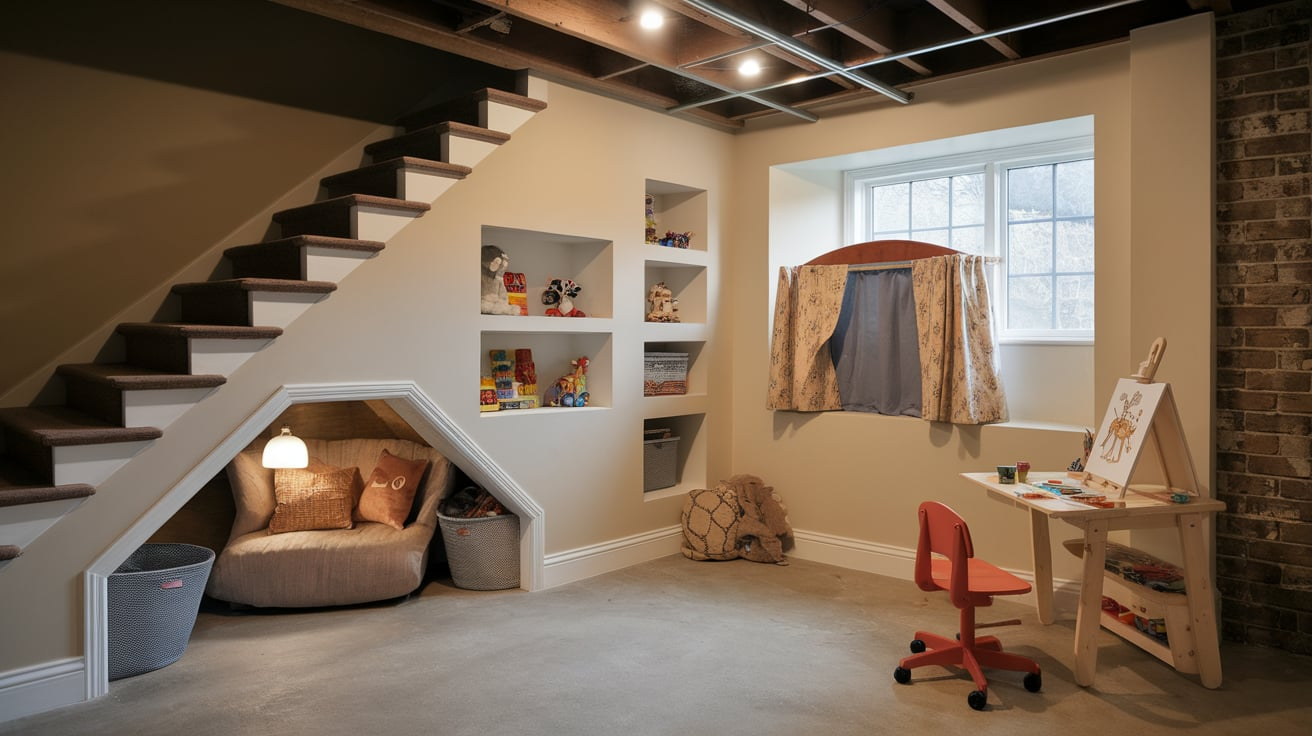
This layout works well in finished basements that have pillars, low ceilings, or awkward shapes. Turn each nook or section into a play feature.
How to Use Nooks:
- Under-stairs = Reading fort
- Corner space = Art desk
- Window spot = Puppet theater or mini stage
- Recessed wall = Built-in storage cubbies
It helps make use of every inch of space, even tricky ones.
6. Flexible Layout
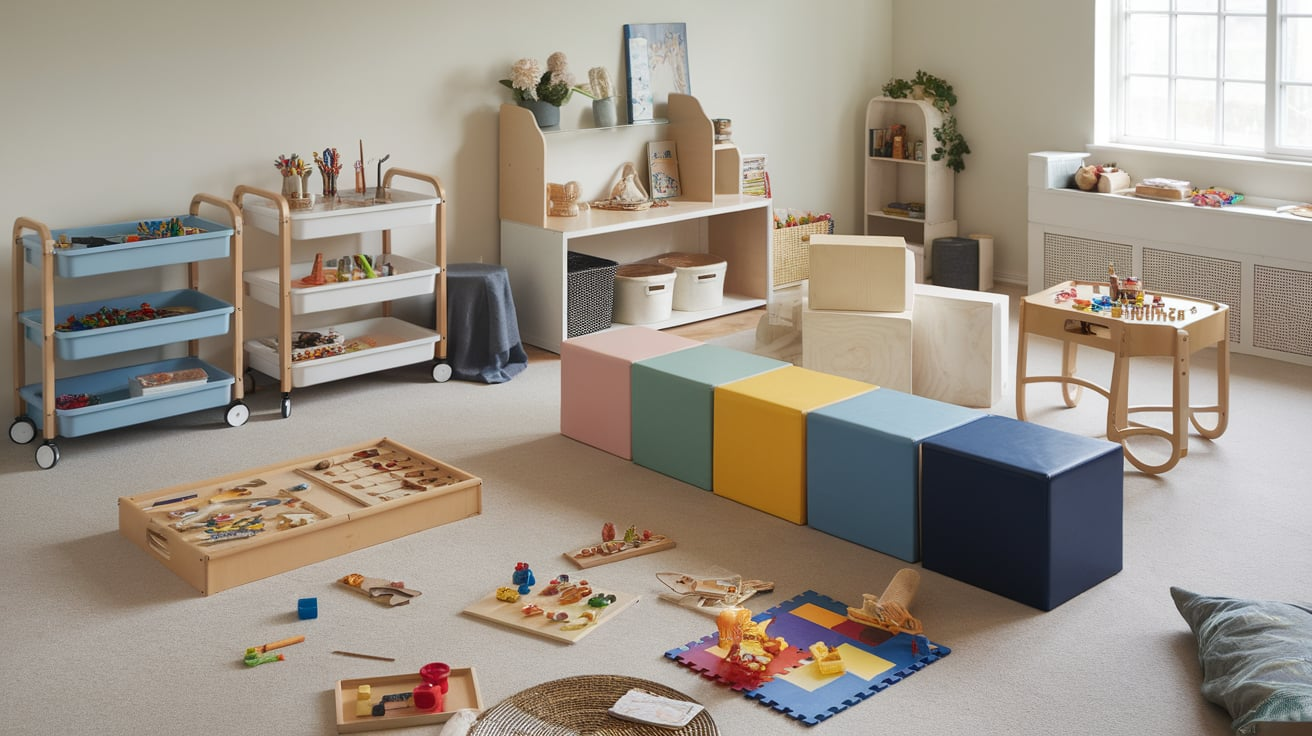
This layout is for families that want to change things up over time.
Features:
- Rolling shelves or carts: Move storage as needed.
- Foldable tables and mats: Easy to put away or rearrange.
- Modular furniture: Like cube shelves or stackable chairs.
- Clear floor space: Allows for changing setups, today it’s a puzzle zone, tomorrow it’s a dance floor.
This layout grows with your child and their changing play needs.
Bonus Tips for a Great Basement Playroom
Once you’ve picked your ideas and layout, a few extra tips can make your basement playroom even better. These small steps help the space feel safe, cozy, and fun for both kids and parents. Some simple things to keep in mind are:
- Check for dampness before setting up. Use a dehumidifier if needed to keep the space dry and mold-free.
- Use soft lighting like string lights, floor lamps, or warm bulbs to make the room feel bright and inviting.
- Pick washable materials like rugs, cushions, and wall paint that are easy to clean when spills happen.
- Add soft corners and safety covers on furniture to help prevent bumps and injuries.
- Anchor heavy shelves or furniture to the wall so they won’t tip over.
- Rotate toys often to keep things fresh without overcrowding the space.
- Let kids help decorate by picking colors, hanging their art, or adding personal touches.
- Use sound-absorbing items like rugs, curtains, or wall panels to cut down on echoes and noise.
- Leave room to grow so you can add a desk or reading spot later as your child gets older.
- Keep a first-aid kit nearby, just in case of small cuts or bumps during playtime.
These extra tips don’t take much time or money, but they can make a big difference in how your playroom looks and feels.
Conclusion
Designing a basement playroom can be a simple and enjoyable experience. I appreciate that it provides kids with their own space to play, learn, and be creative.
You don’t need fancy stuff or a big budget. Just start with a few innovative ideas and build from there.
Add soft flooring, fun colors, and designated areas to store toys. Set up zones for reading, art, or pretend play.
Keep the space clean and safe. As your kids grow, the room can grow with them. The most important thing is to make it a space they love.
A good playroom isn’t about how much you spend, it’s about how it feels. I hope these ideas help you create a place full of joy, color, and laughter.
Now it’s time to bring that basement to life. Let the fun begin!

